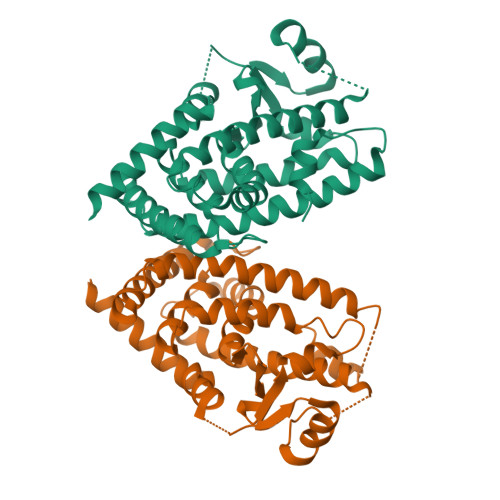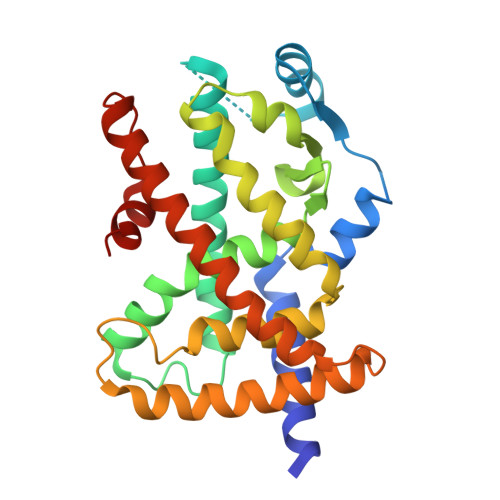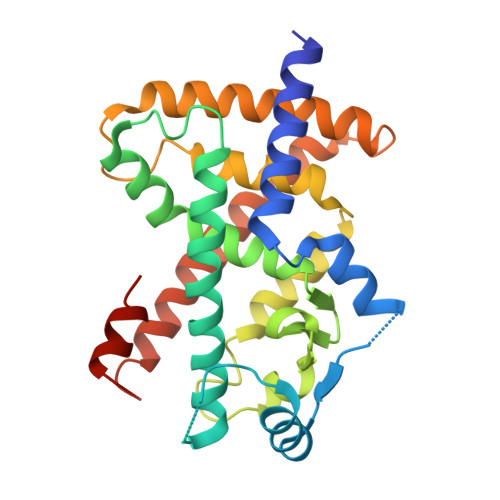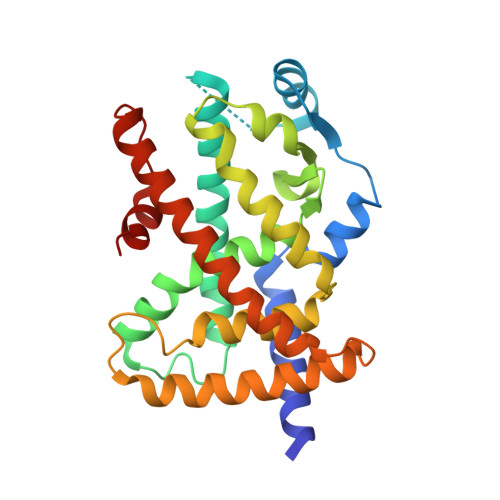Structural mechanism underlying ligand binding and activation of PPAR gamma.
Shang, J., Kojetin, D.J.(2021) Structure 29: 940-950.e4
- PubMed: 33713599
- DOI: https://doi.org/10.1016/j.str.2021.02.006
- Primary Citation of Related Structures:
6VZL, 6VZM, 6VZN, 6VZO, 7JQG - PubMed Abstract:
Ligands bind to an occluded orthosteric ligand-binding pocket within the nuclear receptor ligand-binding domain. Molecular simulations have revealed theoretical ligand entry/exit pathways to the orthosteric pocket; however, it remains unclear whether ligand binding proceeds through induced fit or conformational selection mechanisms. Here, using nuclear magnetic resonance spectroscopy, isothermal titration calorimetry, and surface plasmon resonance analysis, we provide evidence that structurally distinct agonists bind peroxisome proliferator-activated receptor γ (PPARγ) via a two-step induced fit mechanism involving an initial fast kinetic step followed by a slow conformational change. The agonist encounter complex binding pose is suggested in crystal structures where ligands bind to a surface pore suggested as a ligand entry site in molecular simulations. Our findings suggest an activation mechanism for PPARγ whereby agonist binding occurs through an initial encounter complex followed by a transition of the ligand into the final binding pose within the orthosteric pocket, inducing a transcriptionally active conformation.
Organizational Affiliation:
Department of Integrative Structural and Computational Biology, The Scripps Research Institute, Jupiter, FL 33458, USA.


















